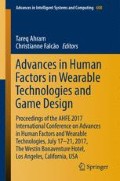Abstract
The paper presents the development of a customizable lower-leg orthotic device. It consists of a single degree of freedom multi-loop linkage designed to facilitate task-specific lower extremity training for rehabilitation purposes. The device guides the knee, ankle and foot of the user along a walking trajectory obtained from motion capture of a healthy human subject. We hypothesize that a device that closely mimics natural human walking motion will be able to provide more desirable design solutions in terms of comfort, stability and safety. Multibody dynamic simulation software OpenSim is used to characterize and assess the trajectory produced by the proposed device. The dynamic simulation predicts the effects of walking with the device and allows the study of the interaction of the orthotic device with the human body during the conceptual and detailed design phases.
Access this chapter
Tax calculation will be finalised at checkout
Purchases are for personal use only
References
Dollar, A.M., Herr, H.: Lower extremity exoskeletons and active orthoses: challenges and state-of-the-art. IEEE Trans. Robot. 24(1), 144–158 (2008)
Ruthenberg, B.J., Wasylewski, N.A., Beard, J.E.: An experimental device for investigating the force and power requirements of a powered gait orthosis. J. Rehabil. Res. Dev. 34(2), 203 (1997)
Banala, S.K., Agrawal, S.K., Fattah, A., Krishnamoorthy, V., Hsu, W.-L., Scholz, J., Rudolph, K.: Gravity-balancing leg orthosis and its performance evaluation. IEEE Trans. Robot. 22(6), 1228–1239 (2006)
Gemperle, F., Kasabach, C., Stivoric, J., Bauer, M., Martin, R.: Design for wearability. In: 2nd International Symposium on Wearable Computers, pp. 116–122. IEEE (1998)
Sonawale, K.H., Arredondo, A., McCarthy, J.M.: Computer aided design of useful spherical watt I six-bar linkages. In: ASME 2013 International Design Engineering Technical Conferences and Computers and Information in Engineering Conference, p. V06AT07A064. American Society of Mechanical Engineers (2013)
Wu, J., Purwar, A., Ge, Q.: Interactive dimensional synthesis and motion design of planar 6R single-loop closed chains via constraint manifold modification. J. Mech. Robot. 2(3), 031012 (2010)
Plecnik, M.M., McCarthy, J.M.: Computational design of Stephenson II six-bar function generators for 11 accuracy points. J. Mech. Robot. 8(1), 011017 (2016)
Tsuge, B.Y., Plecnik, M.M., McCarthy, J.M.: Homotopy directed optimization to design a six-bar linkage for a lower limb with a natural ankle trajectory. J. Mech. Robot. 8(6), 061009 (2016)
Robson, N., Soh, G.S.: Geometric design of eight-bar wearable devices based on limb physiological contact task. Mech. Mach. Theory 100, 358–367 (2016)
Plecnik, M., McCarthy, J.: Synthesis of an inverted Stephenson linkage to guide a point path. In: The 14th IFToMM World Congress, Taipei, Taiwan (2015)
Schmidt, J.P., Delp, S.L., Sherman, M.A., Taylor, C.A., Pande, V.S., Altman, R.B.: The Simbios National Center: systems biology in motion. Proc. IEEE 96(8), 1266–1280 (2008)
Acknowledgments
The authors gratefully acknowledge the support of the National Science Foundation (NSF), award Id #1404011. We would like to thank Mark Plecnik, Postdoctoral Scholar at University of California Berkeley for his help in obtaining solutions for 11 point synthesis of Six-bar function generators. We also acknowledge the assistance of Ahmed Shehab, Abdulsahib Al Hazza, Hilen Rocha, Abdullaziz Al Kharas, undergraduate students in Mechanical Engineering department of California State University Fullerton in assisting in the development of the 3D prototype.
Author information
Authors and Affiliations
Corresponding author
Editor information
Editors and Affiliations
Rights and permissions
Copyright information
© 2018 Springer International Publishing AG
About this paper
Cite this paper
Ghosh, S., Robson, N., McCarthy, J.M. (2018). Development of Customized Orthotics Based on Lower-Leg Anthropometric Data and Task. In: Ahram, T., Falcão, C. (eds) Advances in Human Factors in Wearable Technologies and Game Design. AHFE 2017. Advances in Intelligent Systems and Computing, vol 608. Springer, Cham. https://doi.org/10.1007/978-3-319-60639-2_6
Download citation
DOI: https://doi.org/10.1007/978-3-319-60639-2_6
Published:
Publisher Name: Springer, Cham
Print ISBN: 978-3-319-60638-5
Online ISBN: 978-3-319-60639-2
eBook Packages: EngineeringEngineering (R0)

